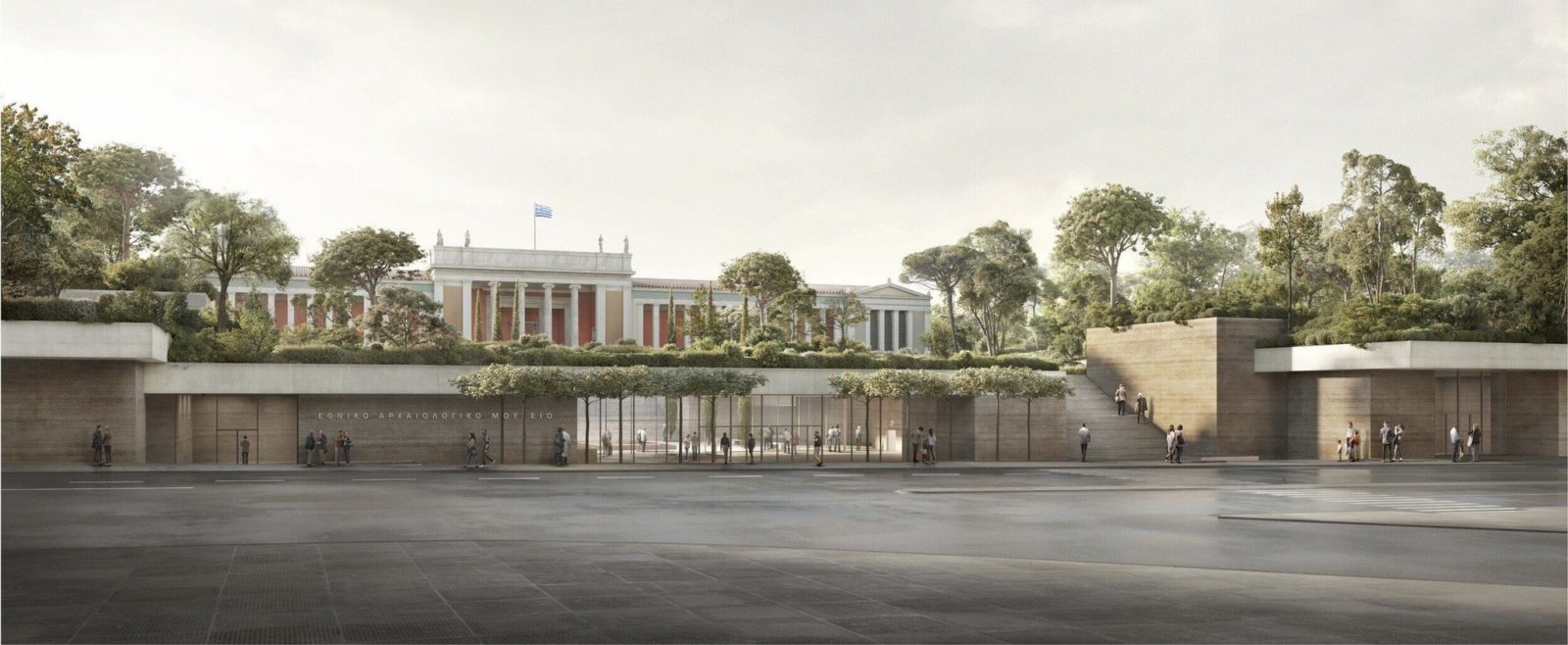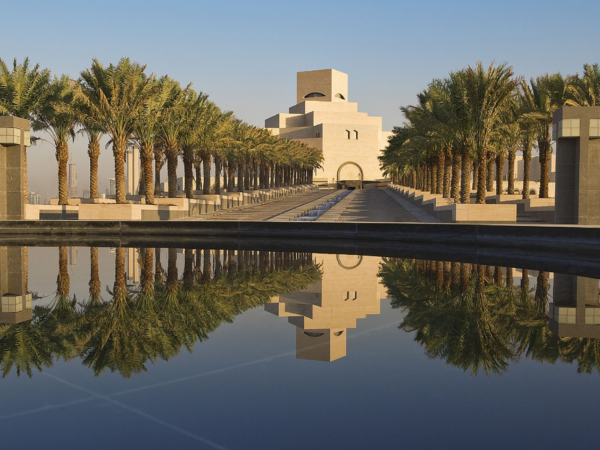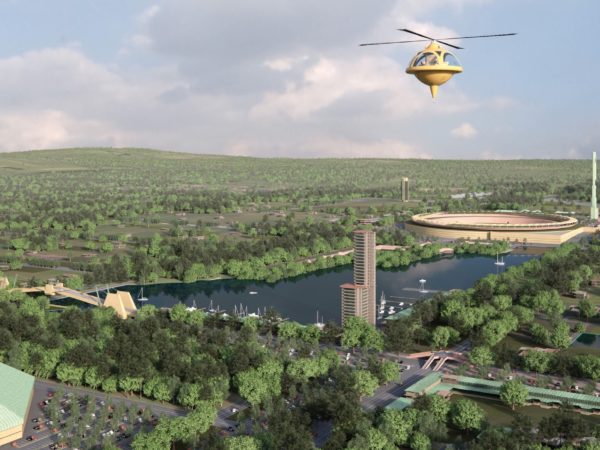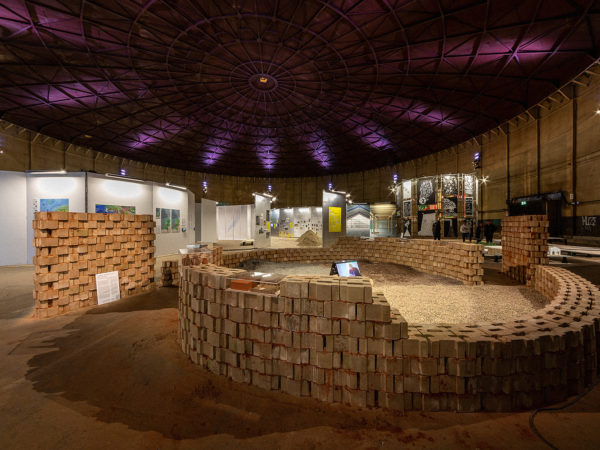Celebrated for his “commitment to an architecture of understated but transformative civic presence,” Sir David Alan Chipperfield CH was selected as the 2023 Laureate for architecture’s highest honor, The Pritzker Architecture Prize. With a practice spanning over four decades, the British architect’s body of work ranges across varied geographies and scales; from cultural, residential, educational to commercial and civic buildings.

Having worked on various museum projects, David Chipperfield Architects recently unveiled their winning design for the National Archaeological Museum in Athens, Greece which houses the collection of prehistoric and ancient art. Drawing inspiration from the existing neoclassical structure, the proposal has two floors of subterranean galleries and a green park on the roof.

Going beyond the notion of a style, language, or trend, David Chipperfield talks about the urgency to “address the existential challenges of climate change and societal inequality” through his work. He emphasizes the importance of mitigating the impacts of construction on the environment, thoughtfully using resources, and creating spaces for civic good. The practice envisions new ways of engaging the community, creating a dialogue between the traditional and the contemporary, and seamlessly integrating it with the existing urban fabric. Chipperfield’s projects demonstrate his ingenuity in dealing with issues of history, culture, sustainability, functionality, and its relation with the city and its people.
James Simon Galerie, Berlin, Germany
Continuing the architectural language of the pre-existing with a modern minimalistic expression, the James Simon Galerie acts as a gateway and an exhibition building for the Museum Island, an ensemble of five museum buildings from the time of the Prussian rulers on Spree Island in the heart of Berlin. Between the Kupfergraben canal and the reconstructed Neues Museum which was also overseen by David Chipperfield Architects, the new James Simon Galerie provides a physical connection above ground with the Pergamon Museum. Further, it links the Neues, Altes, and Bode Museum via the Archaeological Promenade at the basement level.


To make the museum act as a dynamic social space, the core areas like the auditorium and exhibition space are pushed to the lower level, and the upper level is left to function like a public plaza. The features of the building like the slender columns, colonnade, high plinth, stone façade, and grand steps from the street to the foyer are all informed by the works of Friedrich August Stüler, Karl Friedrich Schinkel, and other architects involved in the creation of Museum Island. To respect the context and not overpower it, the use of reconstituted stone in an unornamented way helps it blend in with the language of the museum buildings around.
BBC Scotland headquarters, Glasgow
How does one create spaces for interactions and encounters between its users without compromising the functionality of the other primary spaces? BBC Scotland headquarters achieves this by creating a large, central atrium designed as a series of steps and platforms. These large terraces not only facilitate circulation but also act as break-out spaces for informal gatherings.
The seven series of drawings showcased, possess a very distinctive sense of dread and uneasiness with women’s bodies in uncomfortable positions that are sometimes elongated, convoluted or even trapped with an armour fusing with the body resulting in a bizarre appearance. The figures in her drawings confront the bold & fierce strokes of line exaggerating the dynamism in them. The anxiety is even more accentuated by the dominant use of black pigment and the intense rubbing of charcoal on paper. Remarked by the eminent artist Sudhir Patwardhan, “The exhibition highlights the ambivalent and circular relation between safety and the loss of freedom, between sanctuary and prison.”

Located adjacent to the river Clyde, the glass building is a ‘contained yet publicly accessible building’ with diverse workspaces including digital studios, production facilities, technical support, television, radio, internet, and office space. To hermetically isolate the studio spaces while connecting the office spaces with the central promenade and the surrounding landscape was a challenging undertaking. Hence, the large television studios are tucked under the steps while the office spaces are arranged around the central atrium.
Inagawa Cemetery chapel and visitor center, Hyogo
In an effort to intensify one’s experience of the space, the design is conceived as a sensorial and meditative piece of architecture. The ceremonial flight of steps leading up to the shrine at the highest point is symbolic of one’s upward journey to the divine. It acts as the main axis with terraced cemeteries on either side and the visitor center and chapel placed opposite the shrine. Designed around a courtyard, the visitor center and chapel are envisioned as a threshold between the outside world and the inner contemplative world.

Located on a steep site in the Hokusetsu mountain range of Hyogo prefecture, the red-colored monolithic structure is defined under a single, sloping roof in harmony with the sloped terrain of the site. The pure geometry of the design, unornamented spaces, quiet rooms, and cool interiors all lend a meditative quality to it. The indirect light infiltrating the interiors from the gardens with plants inspired by Japanese meadows and woodlands further adds to the sublime atmosphere of the spaces. Water with its healing and calming quality is used as a feature in the building where a small channel between the staircase carries water from the top of the mountain towards the building which is collected in a trough placed at the entrance.
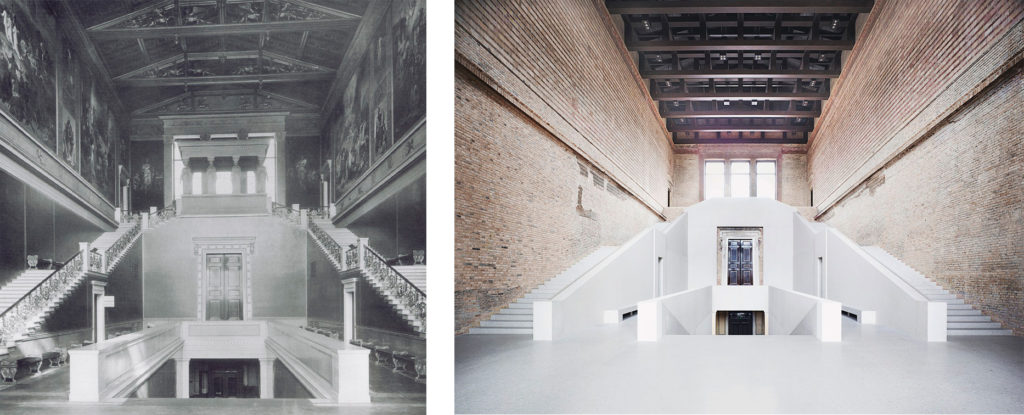
“As an architect, I’m in a way the guardian of meaning, memory, and heritage,” says the Laureate during his acceptance speech. With an approach rooted in simplicity and functionality, the works of David Chipperfield demonstrate a commitment to addressing the context, culture, and the way users will interact with the built space.
Text by Khushboo Patel
Image Courtesy: David Chipperfield Architects
Find out more about David Chipperfield:
https://davidchipperfield.com/
https://www.pritzkerprize.com/laureates/sir-david-alan-chipperfield-ch

